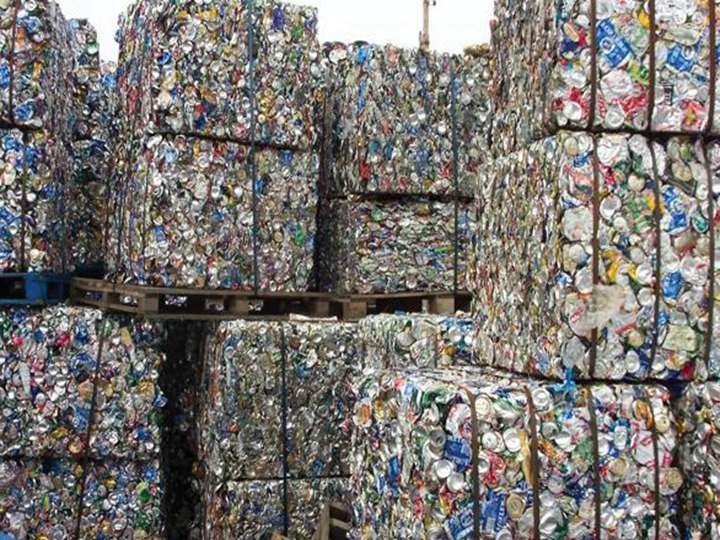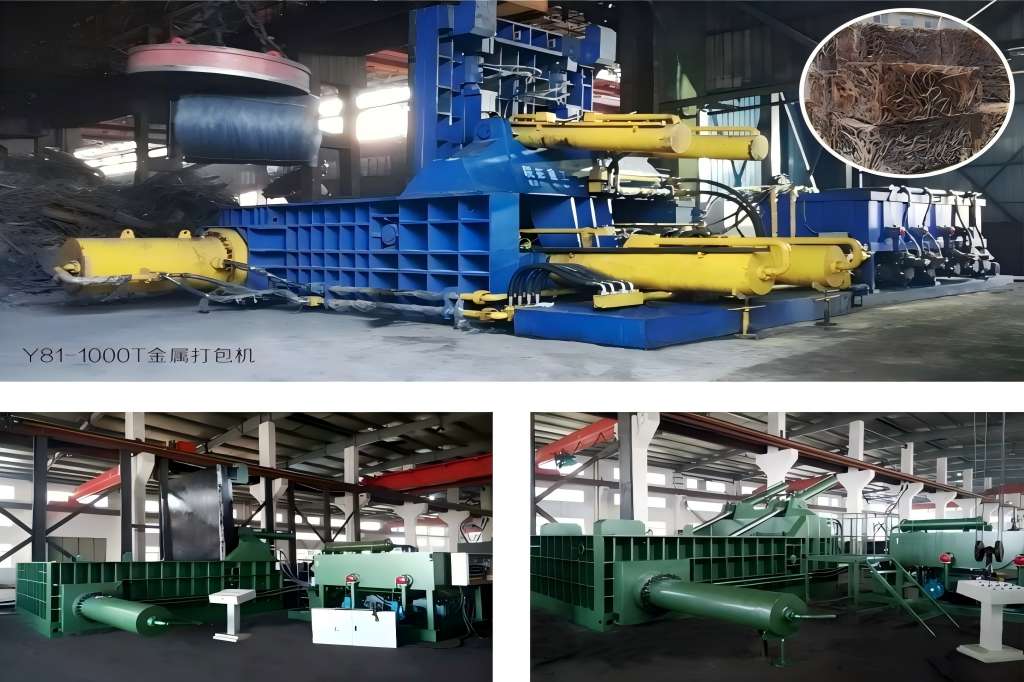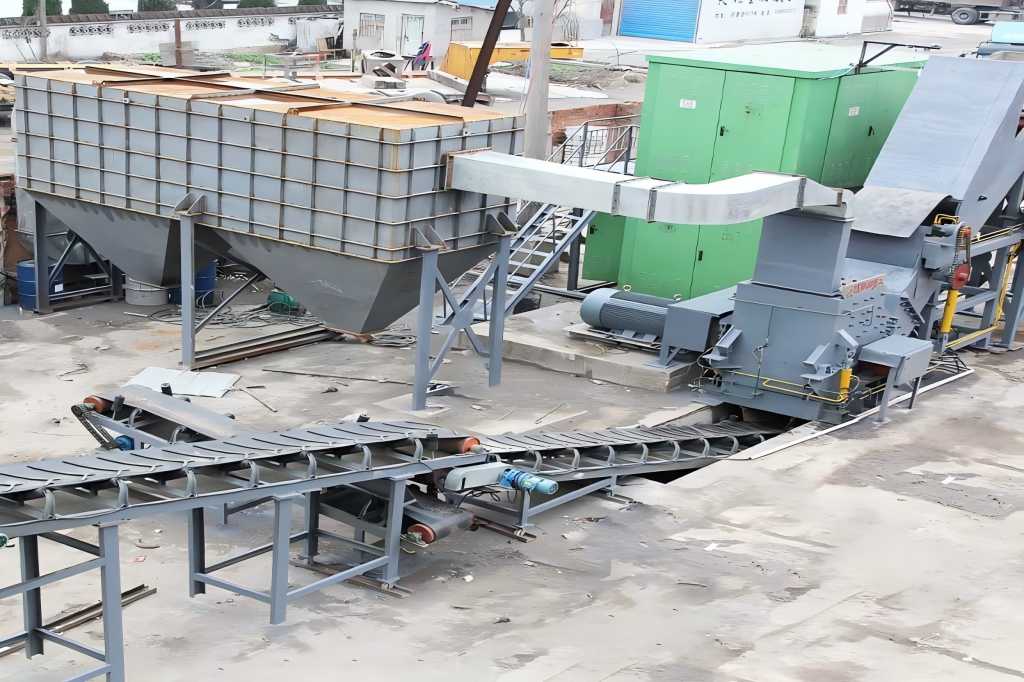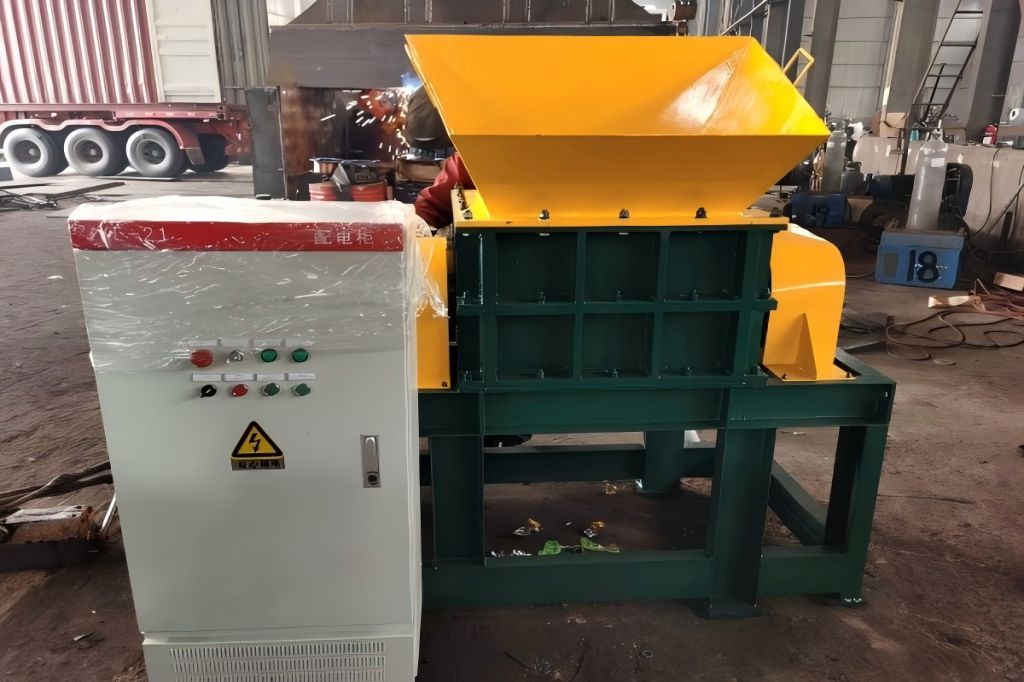Recycling aluminum cans is crucial for environmental sustainability and economic recovery. Aluminum can balers are vital in compressing cans into manageable bales, reducing their size, and facilitating more accessible storage, transport, and recycling.
This article delves into how these machines optimize recycling efforts, highlighting their efficiency, benefits, and significance in the recycling industry.
What is an Aluminum Can Baler?
An aluminum can baler is a specialized recycling equipment designed to compress aluminum cans into dense, manageable bales. These machines utilize powerful hydraulic presses to crush and compact the cans, significantly reducing their original volume. The result is a tightly packed cube or cylindrical bale of aluminum cans, which is easier to handle, store, and transport than loose cans.
Types of Aluminum Can Balers
Aluminum can balers come in various sizes and configurations, each suited to different levels of usage and operational needs:
Horizontal Balers
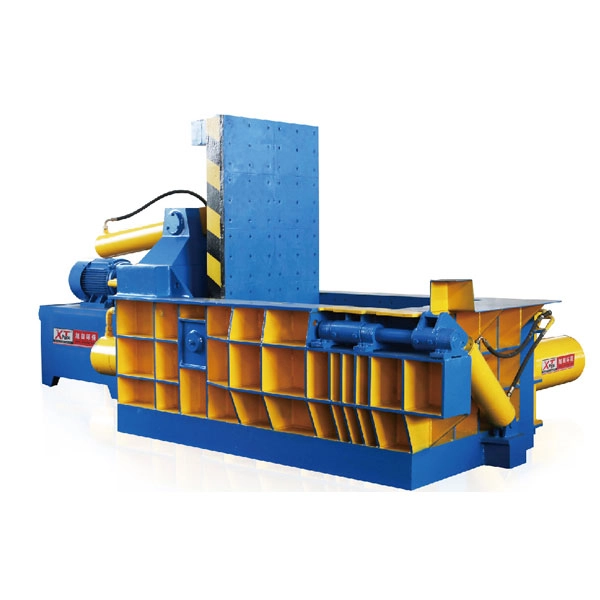
Ideal for industrial-scale recycling, horizontal balers automate much of the baling process and can continuously feed and eject bales. They are typically used in facilities with a high throughput of materials.
Vertical Balers
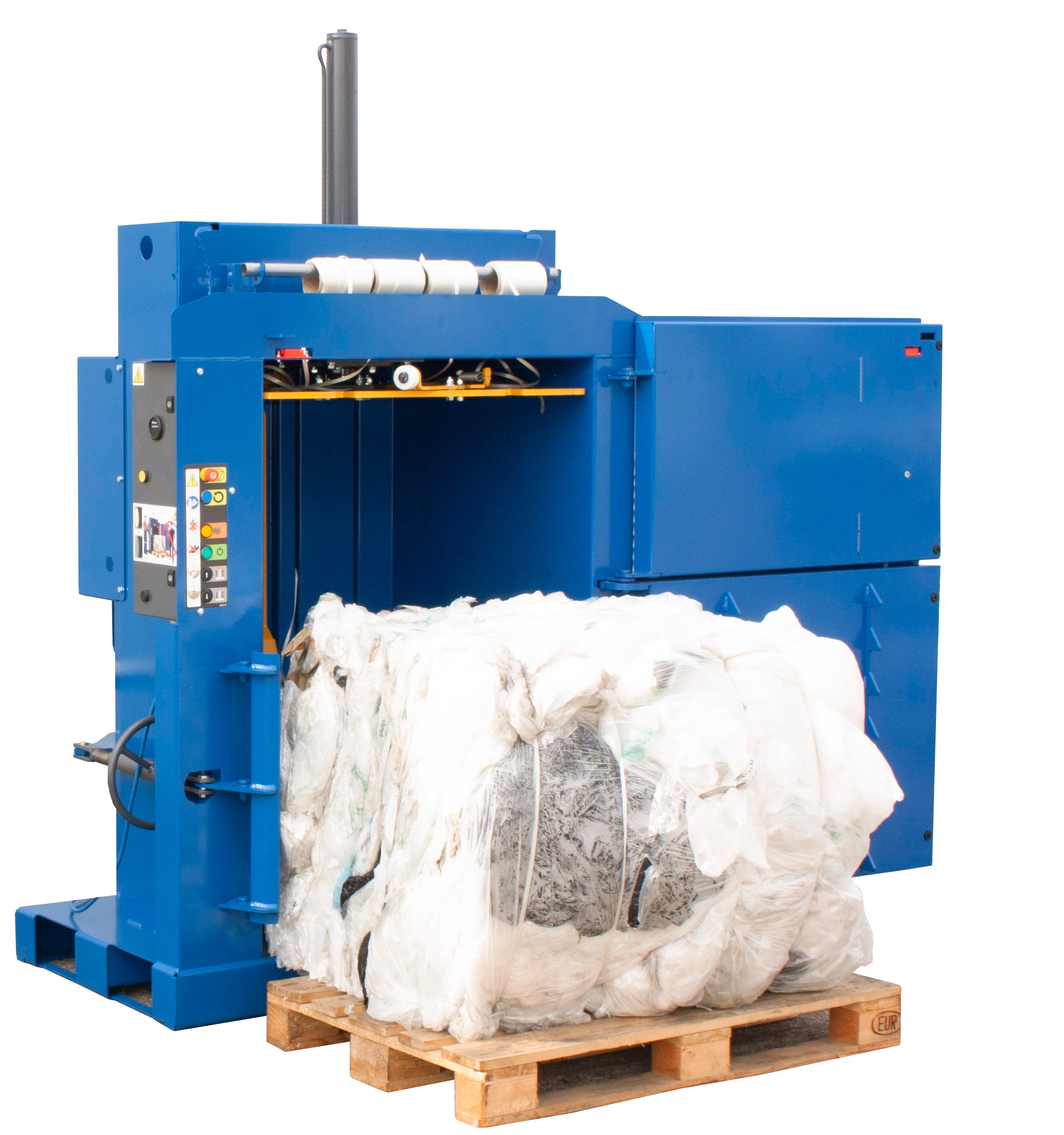
More compact in design, vertical balers are suitable for locations with limited space. They are typically manually fed and operated, making them a good choice for smaller retail or community recycling locations.
How Aluminum Can Balers Enhance Recycling
By converting loose aluminum cans into compact bales, these balers streamline the handling and logistics of recycling aluminum. Baled aluminum cans are more economical to transport and more straightforward to process at recycling facilities. Additionally, the baling process helps maintain a cleaner and more organized recycling area, reducing waste and potential hazards.
What is Unite Top’s Baling Solution?
Unite Top offers a specialized range of aluminum can balers designed to improve the efficiency and effectiveness of aluminum can recycling. These balers are tailored to compress aluminum cans into dense, manageable bales, facilitating more accessible transportation and storage. Unite Top provides different balers for various operational scales, from minor to large-scale recycling operations.
Y82-25 
| Y82-63KL 
Get Inquiry | Y82-200T 
Get Inquiry |
Benefits of Using Aluminum Can Balers
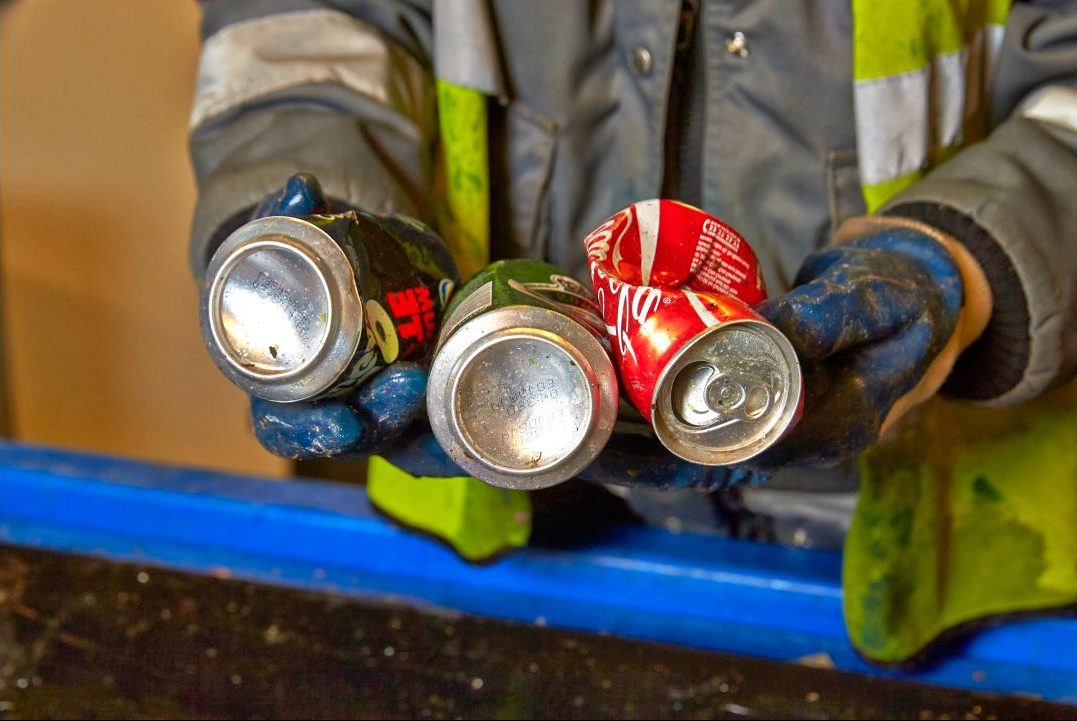
Using aluminum can balers substantially stream recycling operations and contributes to more sustainable practices. These advantages include:
- Increased Efficiency: Aluminum can balers compact cans into uniform bales, streamlining handling and transportation and reducing loading times.
- Cost Reduction: Compacting cans reduces their volume, lowers transportation and storage costs, and increases the value of recyclable material.
- Improved Workplace Safety: Balers help maintain a tidier, safer work environment by reducing clutter and tripping hazards associated with loose cans.
- Enhanced Recycling Rates: Balers facilitate faster processing of recyclable materials, potentially increasing overall recycling rates.
- Environmental Benefits: By improving recycling efficiency, balers help conserve energy and resources, reducing the ecological impact of producing new materials from raw resources.
- Regulatory Compliance: Using balers can help businesses comply with regulations that mandate increased recycling and efficient waste management.
How Aluminum Can Balers Work
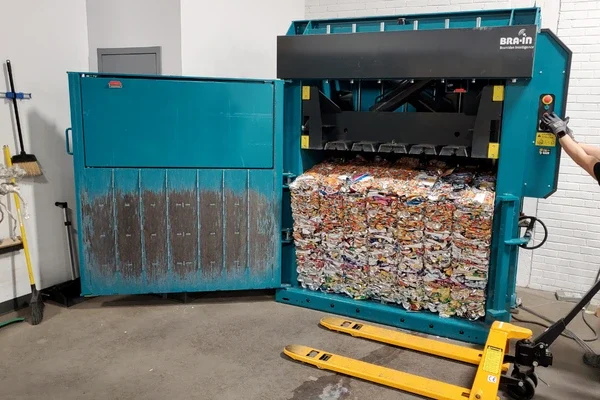
Aluminum can balers use hydraulic systems to compress aluminum cans into compact, manageable bales, simplifying recycling and transportation.
Here’s a general overview of the process:
- Loading: Aluminum cans are collected and loaded into the baler’s chamber. This can be done manually or automatically, depending on the type of baler.
- Compression: The baler’s hydraulic arms are activated once the chamber is filled. These arms press down on the aluminum cans with significant force, crushing and compressing them into a much smaller volume.
- Ejection: After the cans are compressed, the dense bale is tied with wires or straps to hold its shape. The bale is then ejected from the machine and transported to a recycling facility.
- Transport: The bales are more accessible and cost-effective because their uniform shape and reduced size allow for more efficient loading and fewer trips.
Key Features to Consider When Choosing an Aluminum Can Baler
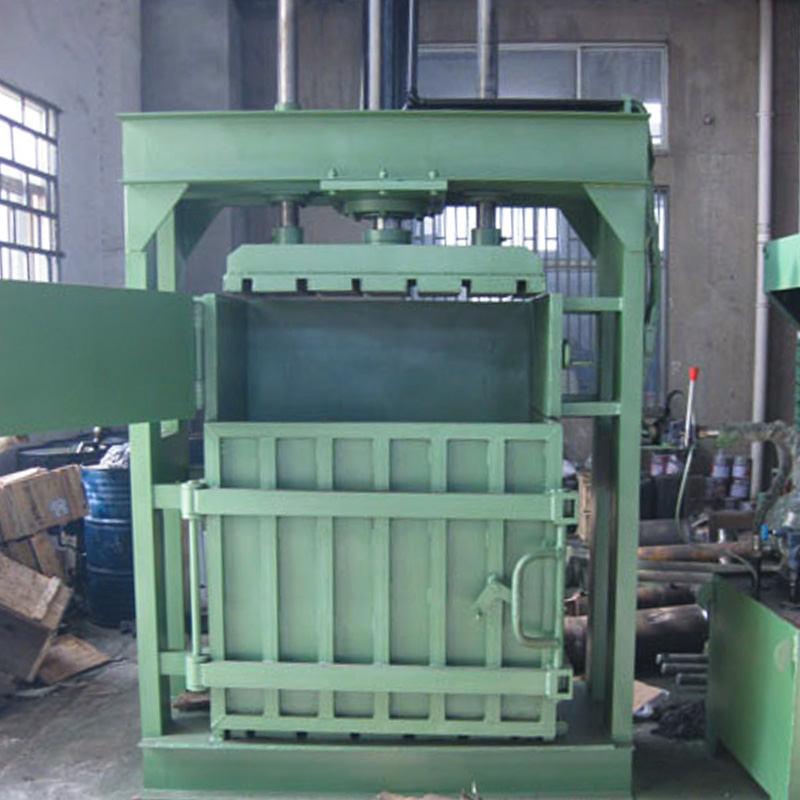
When selecting an aluminum can baler, focus on these essential aspects:
- Baler Type: Choose vertical balers for lower volumes and horizontal balers for more extensive operations.
- Size and Footprint: Ensure the baler fits your space and allows easy operation and maintenance.
- Bale Size and Weight: Select a baler that produces bales fitting your transport and storage capabilities.
- Operational Speed: For extensive facilities, a faster baler helps maintain efficiency.
- Ease of Use: Opt for balers with straightforward controls and automated features to minimize labor.
- Maintenance Needs: Look for easy-to-maintain models to keep downtime low.
- Durability: Invest in a sturdy, reliable baler to avoid frequent repairs and extend its lifespan.
- Cost: Consider both the purchase price and long-term operating costs.
- Safety Features: Ensure the baler includes safety measures like emergency stops and safety interlocks.
- Support and Warranty: Ensure good after-sales service and warranty terms to secure your investment.
Conclusion
Aluminum can balers are indispensable tools for enhancing the efficiency and effectiveness of recycling operations. They compact aluminum cans into uniform bales, simplifying handling, transportation, and storage while reducing costs and environmental impact.
When choosing a baler, consider its type, size, speed, and ease of use to ensure it meets your needs. Investing in a suitable baler supports operational efficiency and contributes to broader environmental conservation efforts.

